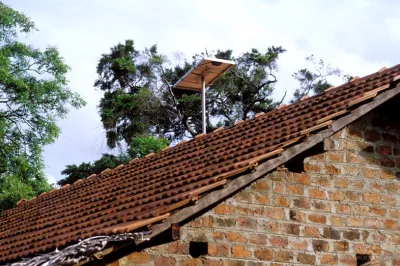Expanding the Horizons of Pay-as-You-Go Solar
As a CEO, investor and consultant in Africa’s pay-as-you-go (PAYGo) solar industry, I would characterize PAYGo solar as a successful innovation. A number of pioneering companies have proven that there are viable alternatives to home solar system financing that can be more accessible and appealing to low-income customers than collateral-based loans offered by banks. Internet connectivity, remote lockout technology and low-cost mobile payments have made it possible for PAYGo companies to reach rural families living off the grid. As a result, access to solar energy has expanded rapidly across East and West Africa. However, I wouldn’t say PAYGo has been an unqualified success.

PAYGo has made huge leaps forward in two areas: control of the asset and payments. Remote lockout technology has enabled companies to monitor and collateralize assets in areas that are miles from the nearest road. Mobile money has helped borrowers in those areas to easily and regularly repay. While these innovations are significant, there has been a lack of attention to the tougher parts of equipment financing: cost control and portfolio management.
We in the industry have more work to do to match our prices to poor customers’ income levels and to improve repayment rates. These are challenges for those of us who are building on the work of PAYGo solar pioneers by expanding into less attractive markets, where incomes are lower, mobile money is nascent and infrastructure can be dodgy. My company, Epsilon, is working on these challenges in Mozambique, where we now have the added challenge of dealing with the aftermath of Cyclone Idai.
1. Lower costs to reach more customers at the bottom of the pyramid
If your PAYGo solar company is selling to customers at the middle of the pyramid and you’re moving up, you’re moving away from the market. Most potential PAYGo customers are at the bottom of the pyramid. To reach them, PAYGo companies must lower their prices at the point of sale or they will run out of customers. At Epsilon, we have focused on driving down the costs of the solar equipment we buy off the shelf and on improving our scale and credit rating to reduce our borrowing costs. We are also trying to reduce our organizational costs and get more done with less.
To fully reach the hundreds of millions of potential off-grid solar customers, however, the PAYGo industry needs to find multiple ways to offer lower costs. Moving into the secondary market is another option that Epsilon is exploring. PAYGo companies can sell refurbished solar units with warranties using the same distribution channels. With useful life cycles of five years for quality solar units, providers could aim to upgrade customers within a couple of years and redistribute (and refinance) their used systems to customers in the same communities with less disposable income. In Mozambique, we will need to build the infrastructure for quality refurbishing and resale, and that is a challenge we are excited to undertake.
2. Understand low-income customers to improve repayment rates
PAYGo solar doesn’t reduce credit risk or make the bottom of the pyramid inherently more bankable. Remote lockout technology, which enables lenders to deactivate delinquent borrowers’ solar systems, is a powerful tool to influence payment behavior, but it does not turn a bad customer into a good one. If you accept customers who are ill-equipped to repay you, they will not complete their contract.
PAYGo companies know what to do when customers stop paying, but we know considerably less about how customers will pay over the life of the portfolio. What are the behavioral groups that characterize the majority of customers? Have we gone through enough full payment cycles to know? In Mozambique, my experience is that customers repay but take longer than the agreed contract term. We have more of a timing risk than a credit risk, and we need to adapt this to get the right balance of price, repayment period, collections cost and cost of borrowing.
Overall, PAYGo providers should make sure that internal incentives align around sustainable repayment. They should also invest in research and experimentation so that they can offer appropriate products, terms and flexibility to different customers.
The future of PAYGo solar is bright
Even if PAYGo companies address these challenges, success still requires a bit of luck. This spring, Cyclone Idai hit our sales zone in Mozambique. While there was limited flooding, loss of life and house damage, our customer’s crops were destroyed, and they were suddenly without any source of income for payments or deposits. As a result, we are facing a 75 percent reduction in payments and a six-month halt to new sales. Some risks can be managed; some are just risks.
But our misfortune with the cyclone doesn’t change the fact to me that PAYGo has a bright future. There is a huge demand for PAYGo solar. If PAYGo companies can reach a price point that supports scalable operations, and if they can leverage software and management tools to collect against their portfolios and run their businesses cost-effectively, they could completely remake equipment financing not just for solar, but for any number of other assets and services that benefit poor customers.
Kevin Kennedy is a renewable energy and asset financing professional with over 20 years of entrepreneurship and operational experience in mature and developing markets.




Add new comment